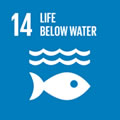Por favor, use este identificador para citar o enlazar a este item:
http://hdl.handle.net/10261/275774COMPARTIR / EXPORTAR:
 SHARE SHARE
 CORE
BASE CORE
BASE
|
|
| Visualizar otros formatos: MARC | Dublin Core | RDF | ORE | MODS | METS | DIDL | DATACITE | |

| Título: | A novel ‘sea-thermal’, synergistic co-valorisation approach for biofuels production from unavoidable food waste (almond hulls) and plastic residues (disposable face masks) |
Autor: | Remón, Javier CSIC ORCID; Oriol, Luis CSIC ORCID; Pinilla Ibarz, José Luis CSIC ORCID ; Suelves Laiglesia, Isabel CSIC ORCID | Palabras clave: | Almond hulls Disposable face masks Co-valorisation Feedstock interactions Seawater |
Fecha de publicación: | 27-jun-2022 | Editor: | Elsevier | Citación: | Chemical Engineering Journal 449: 137810 (2022) | Resumen: | This work first-time addresses the synergetic hydrothermal co-valorisation of almond hulls (an unavoidable food waste) and FFP2 face masks (a common plastic material) using seawater (a sustainable reaction medium). The effects of the feedstock composition (each material alone and all possible binary combinations) and the reaction medium (deionised water, seawater and all possible binary mixtures) have been evaluated at 350 °C and 170 bar over a wide range of reaction times (20–180 min). Bilateral biomass-plastic synergistic and antagonistic interactions between both feedstocks, combined with several promoting and inhibiting effects displayed by seawater, ruled the distribution of the reaction products and their most important physicochemical and fuel properties. Process optimisation revealed that the formation of an energy-dense (32 MJ/kg) liquid biofuel was maximised (26% biocrude yield) by conducting the process with almond hulls in deionised water for 115 min. At the same time, face masks promoted solid biofuel formation (83% hydrochar yield, 46 MJ/kg) by coprocessing an almond hulls/disposable face masks mixture (8:92 wt%) in salted (seawater/deionised water mixture with 37471 ppm salinity) water for 180 min. Conducting the process with seawater (44608 ppm salinity) for 180 min allowed coprocessing of both materials (22/78 wt% almond hulls/face masks) efficiently to maximise biofuels production (13% biocrude yield, HHV = 33 MJ/kg and 67% hydrochar yield, HHV = 49 MJ/kg). These results are a breakthrough in developing season-free and flexible biorefineries, which contribute to reducing pollution and bringing out the hidden value of human activity common residues. | Descripción: | 6 figures, 5 tables. | Versión del editor: | http://dx.doi.org/10.1016/j.cej.2022.137810 | URI: | http://hdl.handle.net/10261/275774 | DOI: | 10.1016/j.cej.2022.137810 | ISSN: | 1385-8947 |
| Aparece en las colecciones: | (ICB) Artículos (INMA) Artículos |
Ficheros en este ítem:
| Fichero | Descripción | Tamaño | Formato | |
|---|---|---|---|---|
| j.cej.2022.137810.pdf | Artículo principal | 2,37 MB | Adobe PDF |  Visualizar/Abrir |
CORE Recommender
SCOPUSTM
Citations
10
checked on 11-may-2024
WEB OF SCIENCETM
Citations
9
checked on 24-feb-2024
Page view(s)
107
checked on 21-may-2024
Download(s)
48
checked on 21-may-2024
Google ScholarTM
Check
Altmetric
Altmetric
Este item está licenciado bajo una Licencia Creative Commons



